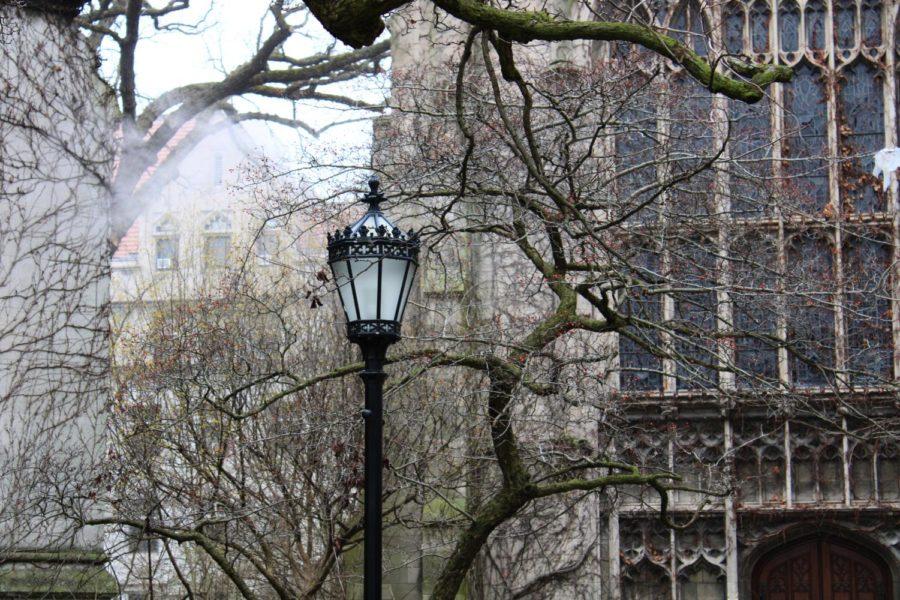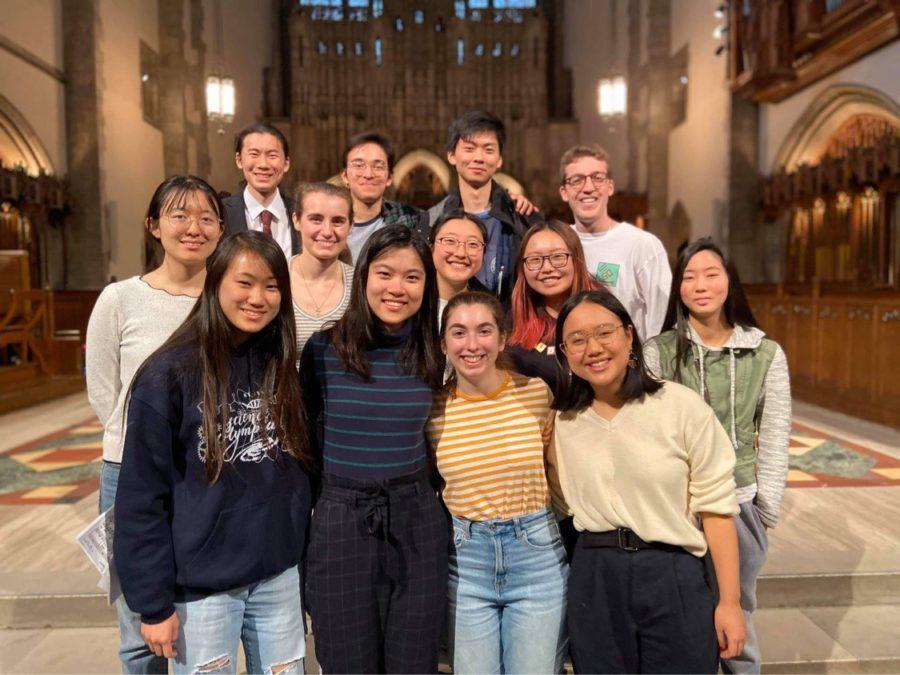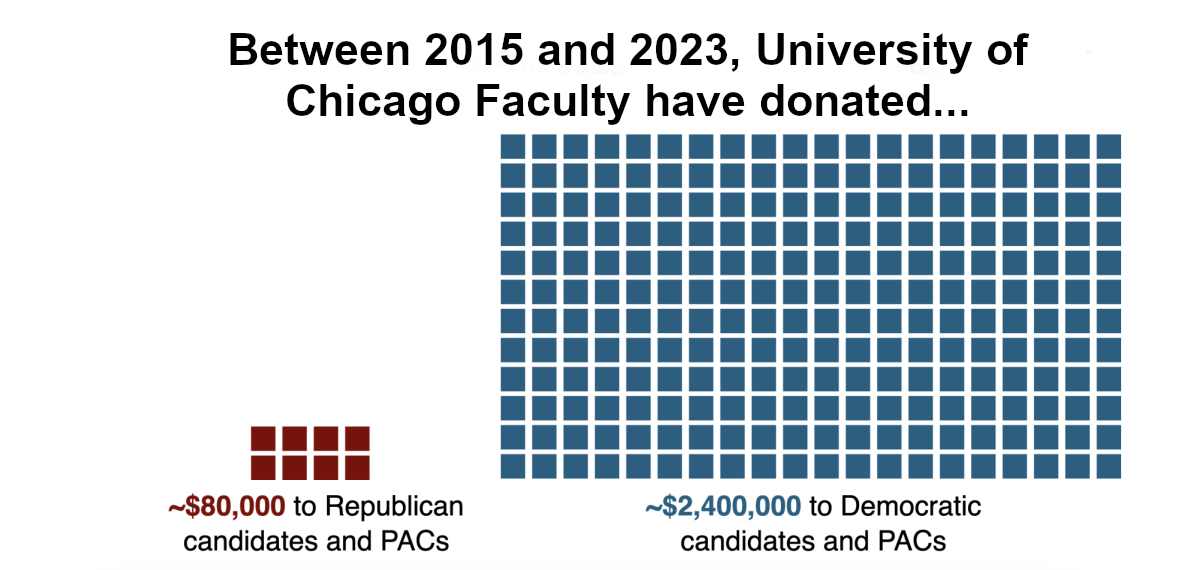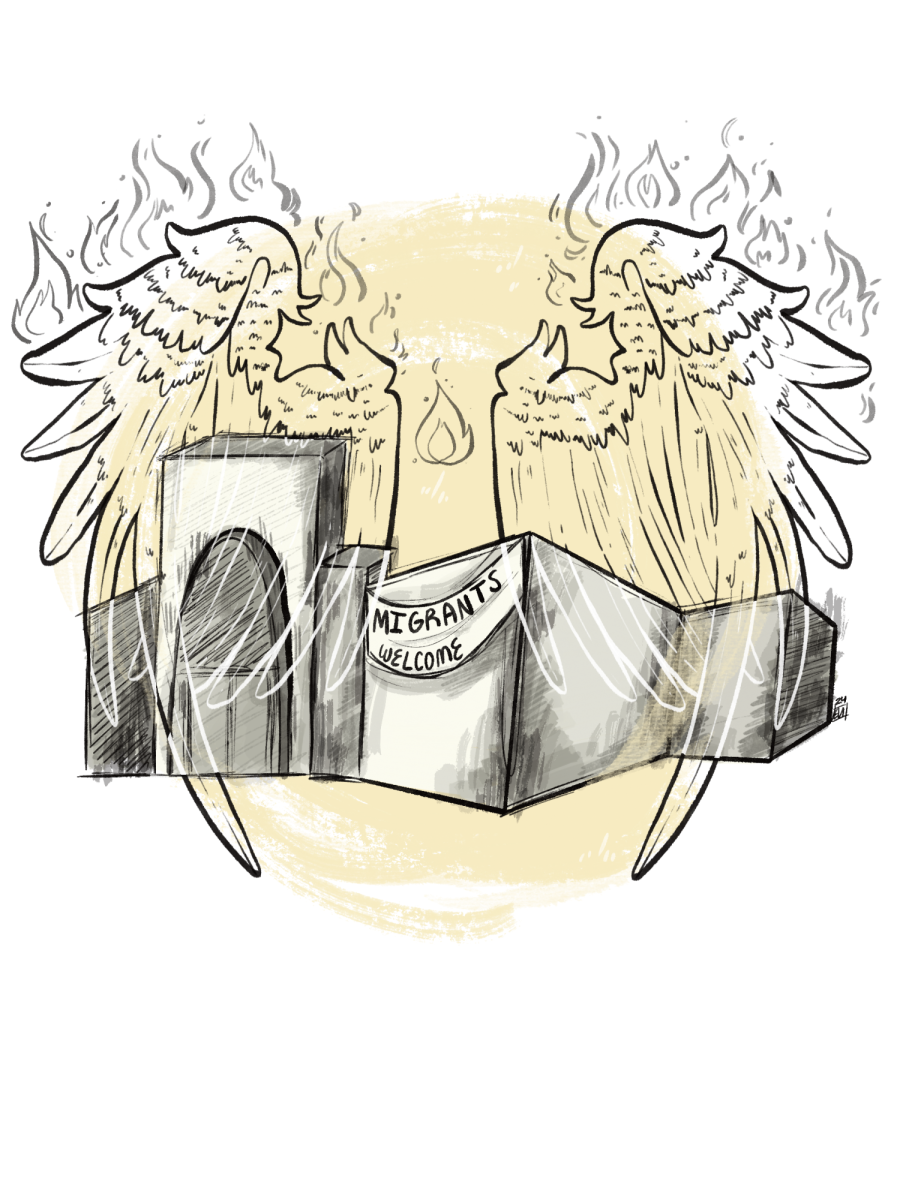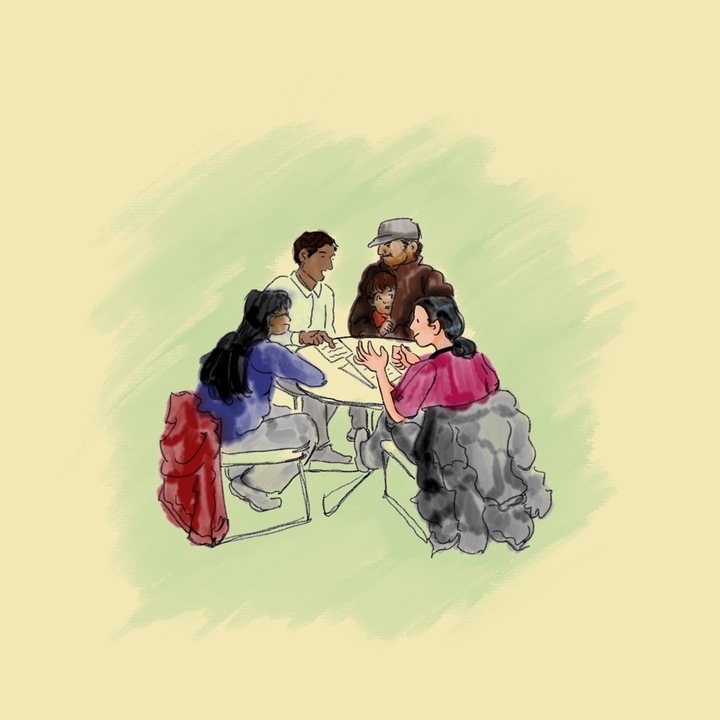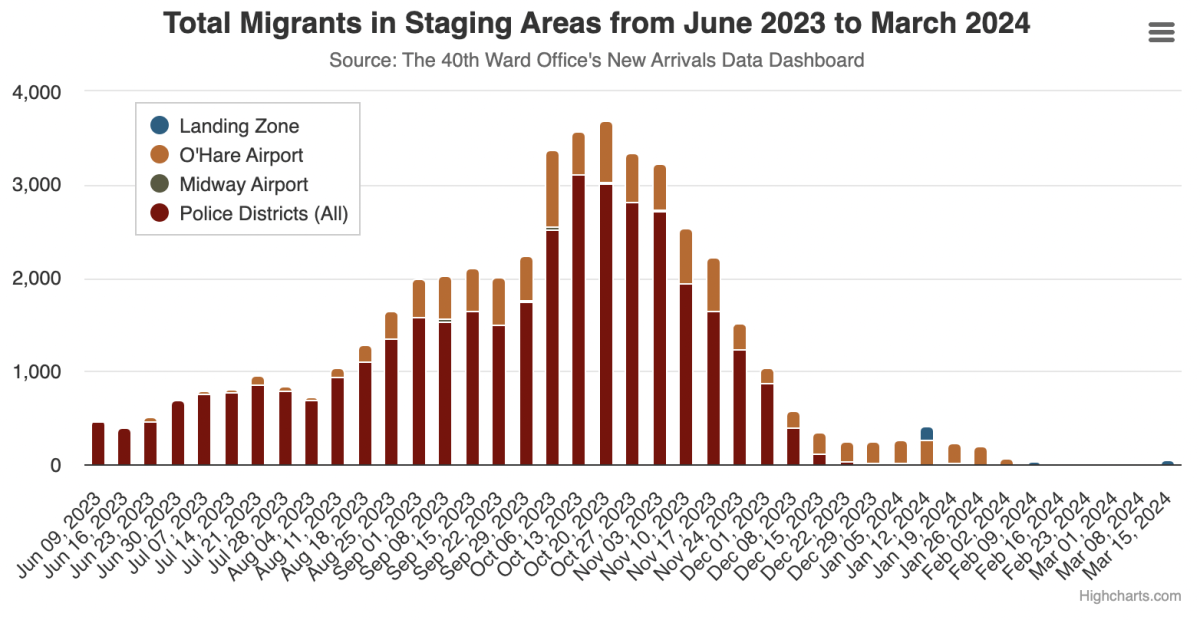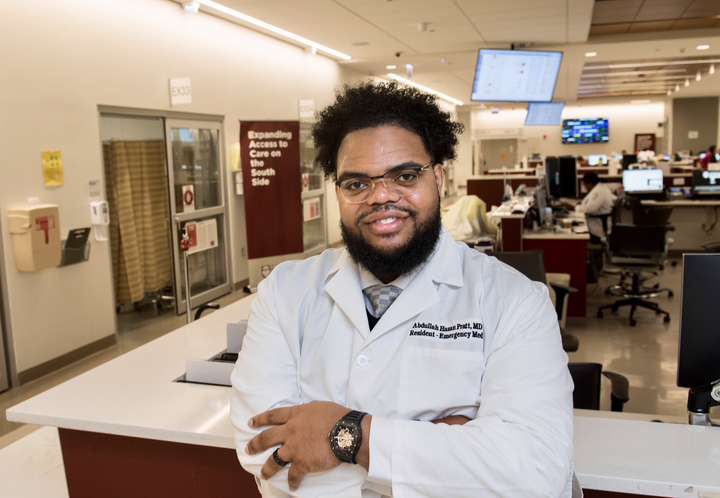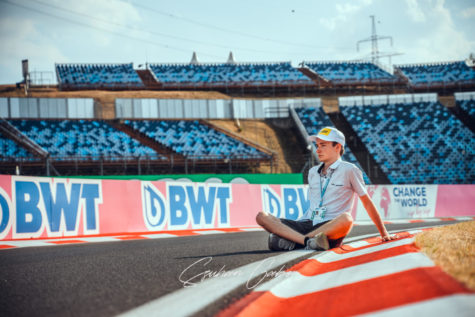On May 25, 2020, George Floyd was murdered by a police officer in the streets of Minneapolis, Minnesota.
The incident was filmed by an onlooker, who posted the footage online; within hours, the video was trending. South Side activists were among millions worldwide to take to the streets throughout what The New York Times branded the “summer of racial reckoning,” joining in calls to defund or abolish the police.
But this wave of activism was not only remarkable for its scale: It also took place during the deadliest pandemic in a century. COVID-19 forced many activists into digital organizing—a shift which, South Side activists attest, has offered both challenge and opportunity.
The Advent of Online Organizing
As COVID-19 began its spread through the United States in March 2020, Chicago residents had to adapt to an unprecedented set of circumstances. For the activist groups who had sustained themselves through gatherings and canvassing, the transition to virtual modes of organizing proved challenging.
“We used to do all of our meetings and canvassing in person,” John Hieronymus, an organizer with Tenants United Hyde Park/Woodlawn, told The Maroon. “When COVID first came and no one really knew what the public health implications were, we had to come up with new ways of getting neighbors talking to each other that didn’t involve being in the same space.”
While COVID-19 impeded the group’s ability to organize, it also exacerbated housing instability, Tenants United’s primary issue of concern. The economic downturn caused by the pandemic meant many tenants suddenly found themselves unable to pay rent. As such, Tenants United Hyde Park/Woodlawn worked to organize them into unions and create Zoom accounts and Slack channels to help them communicate virtually.
Both internal and external social networks have helped spread the word about Tenants United’s efforts. “There are people who’ll be in the neighborhood who won’t have come into contact with a member or an organizer but who will see what we’re doing and then reach out via Twitter DMs [direct messages] or Facebook,” Hieronymus said.
Remote organizing has also prompted Tenants United to begin thinking about making in-person work more accessible, particularly for its members with disabilities or underlying health conditions.
“[We have been] incorporating disability justice principles into some of our organizing work, things like making sure that…when we’re doing in-person direct actions, [we’re] also having concurrent actions for folks who don’t feel safe going out into the public because of their risk,” Hieronymus said.
Michael Stablein Jr., a Ph.D. student at UChicago and an elected steward with Graduate Students United (GSU), noted that the pandemic quashed opportunities for happenstance interactions.
“Prior to COVID, we were able to table outside of buildings on campus. We were able to have very informal meetings that came from just running into fellow members on campus,” Stablein said. “So for us it’s been accepting the Zoom format as our sole method of organizing and figuring out what it means to do synchronous organizing versus asynchronous organizing.”
But one perk of organizing online, he said, is that members of GSU no longer have to travel to congregate in the same space.
“With the inclusion of Zoom, we were finding that our attendance at [committee meetings was] going up because people weren’t having to get themselves to an office or to a classroom in order to have those meetings,” Stablein said.
Building Relationships
The switch to remote platforms has also opened other doors. Stablein said that online meeting spaces have made it easier to involve outside community members in organizing work.
“At our mutual aid committees, we’re able to reach out and meet with local organizations,” Stablein said, listing the #DefundCPD [Chicago Police Department] campaign and GoodKids MadCity as groups that GSU has invited to its programming. “And that’s just been great. Through Zoom, that’s meant that we can have these people around more frequently and [have them] basically giving us better feedback on how we can be a better union to the community.”
At the onset of the pandemic, the #LetUsBreathe Collective formed partnerships with several other organizations in Chicago, including Free Write Arts & Literacy, Envisioning Justice, Kuumba Lynx, and the Old Town School of Folk Music. Together they launched the Stimulus Package for Humanity, a stipend for Chicago-area artists.
“We basically started to fundraise money to support this large microcommission program at the intersection of social justice and pandemic. Essentially, it was a program to support artists and creatives directly,” Jennifer Pagán, cofounder of #LetUsBreathe, told The Maroon. Through the Stimulus Package for Humanity, the organizations collectively distributed more than $9,000 to about 80 artists and creatives, according to Pagán.
Christopher “ThoughtPoet” Brown, a creative director and community organizer involved with both the #LetUsBreathe Collective and Black Youth Project 100 (BYP 100), used his art to tell the story of Chicago in 2020.
“A lot of folks are still very much under the assumption that Chicago means ‘Chiraq’ or anything that’s violent,” he said, “and it’s the complete opposite. I feel like Chicago is the same as a New York, as a [Los Angeles]. You have your very gentrified, very crooked…parts about it, but you also have very beautiful parts about it.”
The pandemic may also have worked to the benefit of the protest movements, as homebound Chicago residents trained their focus on the injustices at hand.
“I was really just focused on letting the city know what was going on. If there wasn’t a protest downtown, it would be on the South Side of Chicago. I tried to make it my business to be there,” Brown said.
During the summer, Brown was arrested and beaten by police in Hyde Park. The ordeal made him focus his organizing efforts on “people power,” or mutual concern for the well-being of others.
“There was a big ask for jail support and trying to make sure that folks had the ability to make at least a phone call once they were being processed,” he said.
People power also took the form of spontaneous, grassroots efforts to help local communities heal from the stress of the protests.
“People were looting…right up the street from my house, [at] a corner store. And the next day, [people in the neighborhood] were actually helping clean up the corner store because that legitimately was the only spot we could get food from at least within a 10-, 15-mile radius,” Brown said.
Pagán, who was also arrested this summer, believes that the events of the past year have made it easier for local organizers to work toward common goals.
“It almost felt natural in a sense for us to be in community…because of what was happening and because of how the state and government was showing us overall that they do not have our best interest [in] mind, and they do not care about our wellness and protection,” she said. “So we came together and built a space and built systems and structures that are able to fulfill and hopefully expand and actualize our larger abolitionist movement.”
“An Undeniable Problem”
As spring turned to summer and the initial surge in COVID-19 cases attenuated, the racial justice movement began to dominate the national consciousness. Activists returned to in-person organizing to protest the recent deaths of Floyd, Ahmaud Arbery, Breonna Taylor, and other Black people, in what was viewed by many as a turning point in race relations.
“I think we were uniquely positioned with being in the house, being in the pandemic, and really just seeing inequity so clearly,” Pagán said. “And then seeing a man murdered again I think activated people in ways that we hadn’t been when Mike Brown was murdered or when countless other people have been murdered by the police.”
Longtime activists like Brown, however, see this year as just a continuation of a long history of racial injustices.
“Police brutalizing and hurting Black and brown lives is nothing new. If anything, you were able to see it [through] a better viewing glass,” Brown said. “I think one of the big reasons why it was so different than a couple years ago is that everyone had no choice but to view what was going on because of COVID.”
The pandemic also rendered stark existing inequities in Chicago’s housing landscape. Hieronymus traced the precarious living situations of many tenants back to the aftereffects of the global financial crisis in 2008, and the economic recession last year became the breaking point for tenants who were already struggling to stay afloat.
“I think it’s just become an undeniable problem,” he said. “I don’t look at [the developments of the past year] as ‘Why did it take so long?’ but more like, ‘Wow, everything kind of snapped because the system itself was built in a precarious way.’”
Hieronymus explained that, in Chicago’s most affluent neighborhoods, those issues rarely bubbled to the surface, even when large numbers of residents were threatened by the effects of the pandemic.
“Those neighborhoods actually have a whole class of service workers,” he said. “And those are the people who got hit with, ‘Oh, you’re a service worker, all of a sudden no one is coming into your job, into the restaurant or maybe the bar you work at, or getting their hair cut,’ these sorts of things.”
The Centers for Disease Control has issued a federal eviction moratorium due to the pandemic. Nevertheless, with evictions continuing to take place across Chicago, Tenants United has had to increase its advocacy efforts in response. Throughout the spring and summer, Tenants United organized protests against Hyde Park property management companies, claiming that the landlords increased rent during the pandemic and failed to protect tenants from unsafe living conditions.
“We have a variety of different actions, everything from just talking with tenants, with the landlord, and explaining the eviction moratorium, to helping tenants change locks and then doing de-escalation with police, because CPD is not supposed to be carrying out evictions even in normal times,” Hieronymus said.
As the racial justice protests arose, #LetUsBreathe pivoted much of its work to support the #DefundCPD movement and to collaborate with the Black Abolitionist Network. Additionally, the Breathing Room—a space that hosted #LetUsBreathe’s multidisciplinary Breathing Room Series before the pandemic—was reopened for community members.
“It really just became this space that we always imagined,” Pagán said, “This space where folks could come and engage in healing conversation after a really traumatic event.”
Pagán said that caring for other members at a difficult time was essential to creating a thriving network of community organizers. The relationships formed among community members embodied an “abolitionist politic”: the attitude that “we just take care of each other and we’re here for each other in times of need and times of uncertainty.”
“It was a beautiful coming together of folks…who were reactivated by this larger moment of global uprising and felt compelled to be back in this movement sphere.”
Lessons Learned
For Pagán, who served as a lead on #DefundCPD’s art propaganda committee, social media proved an important tool for informing and educating others.
“A lot of our strategy was around…using this as a platform to educate folks about abolition, as a platform to really push people and really challenge people to pick a side in this moment. Because if you are not on the side of defunding the police, then that also means that you do not care about Black lives.”
Pagán also mentioned the importance of self-care, particularly in the challenging and fast-moving world of community organizing.
“One thing that this larger moment or this past year and this summer has taught me is that we move at the speed of our healing. A lot of times we cannot just continue to organize and continue to just do, do, do or just respond, respond, respond to all these crises when we’re not doing well or we’re not whole or we’re not healthy,” she said.
The uprisings occurring over the summer meant that Tenants United had to adjust the scope of its activism. For example, the group held free protest-safety trainings for community members in order to better integrate itself into the South Side activist sphere.
The group also faced challenges due to the sheer volume of tenants requesting housing assistance, according to Hieronymus. “I think we weren’t quite prepared for the surge in people who were going to show up, and it took a lot of work to get everyone sorted into spaces,” he said.
Stablein said that GSU’s biggest successes came from embracing the online format. Both the walk-out/teach-in GSU held in June and the conversation on defunding CPD hosted by its mutual aid committee in November took place in primarily virtual spaces, with activists from local community organizations joining as guest speakers. “I think it was a moment where our membership was like, ‘This is why I want to belong in a union. This is really powerful,’” he said.
“Prior to the Zoom era, it would have taken us months to put something like that together. I think for us to bring all those various threads together would have felt impossible, or it certainly would have felt like a drain on our capacities and energies in a way for a one-day turnout. Whereas now, we can turn these kinds of things around much more quickly, and the rewards are great.”
Stablein contended that the online format still has room for improvement, particularly for maintaining a sense of community.
“I think there are things we still have to figure out about what that looks like so it doesn't feel so formalized all the time, [because] a lot of the casual community-building atmosphere does get lost in the shuffle.”
With many community members struggling to buy groceries or pay rent, mutual aid also became a centerpiece of BYP 100’s plans. “The best way to explain it is that…whether you were an organizer or someone who was kind of just watching COVID and the second uprising, [it] affected everyone. It was definitely hard for folks, I guess you could say, to navigate mentally,” Brown said.
Given the pandemic-related restrictions, #LetUsBreathe repurposed its Breathing Room to serve as a food-distribution hub and expanded its garden and farm on the site. Community organizations like the Getting Grown Collective, the Little Village Environmental Justice Organization, Everybody Eats Chicago, and the South Side Food Distribution Network have partnered with #LetUsBreathe in its mutual aid efforts.
“Just because of the nature of a lot of things that are going on right now, a lot of our work has pivoted towards land-based health and wellness and larger healing work,” Pagán said. “So we’re trying to figure out…how to make holistic health and transformation more accessible to the folks we are in community with.”







